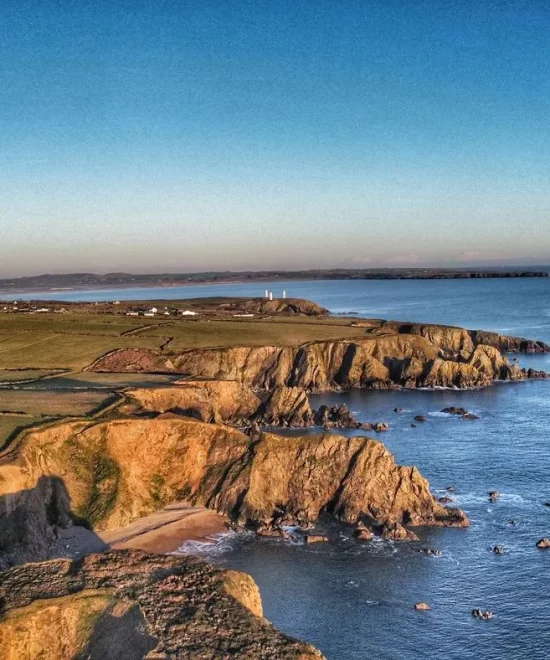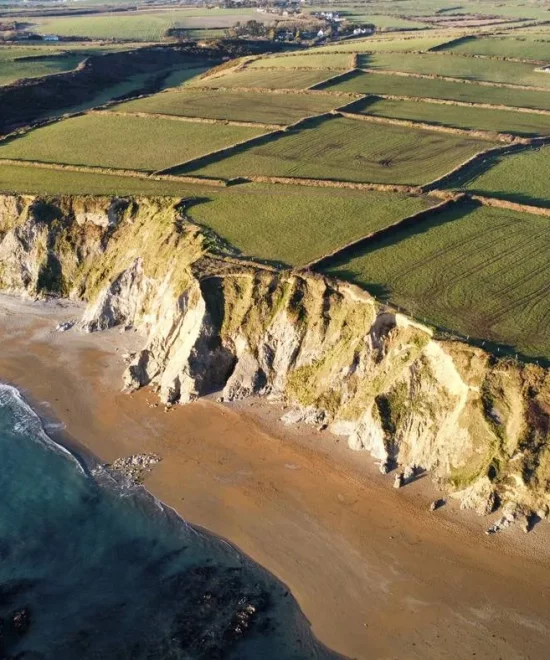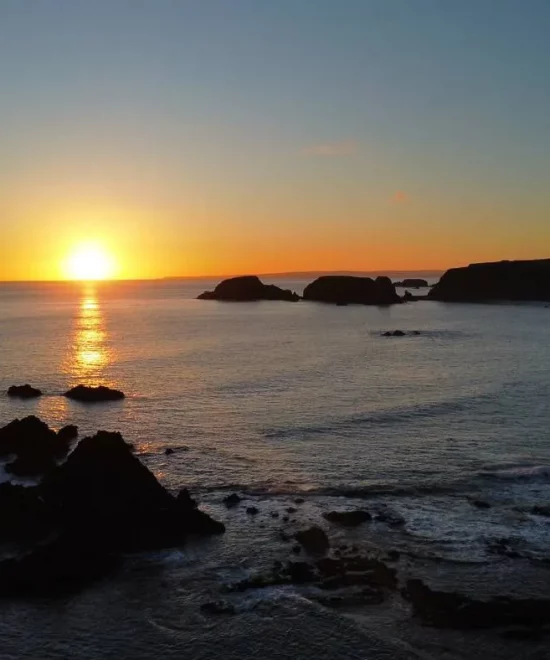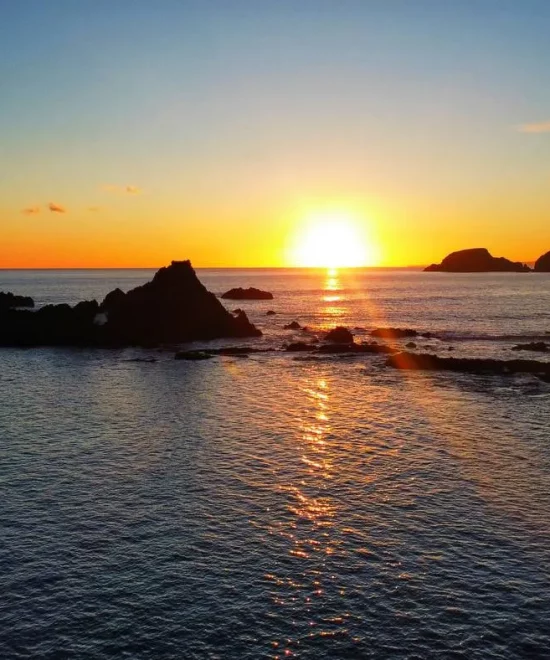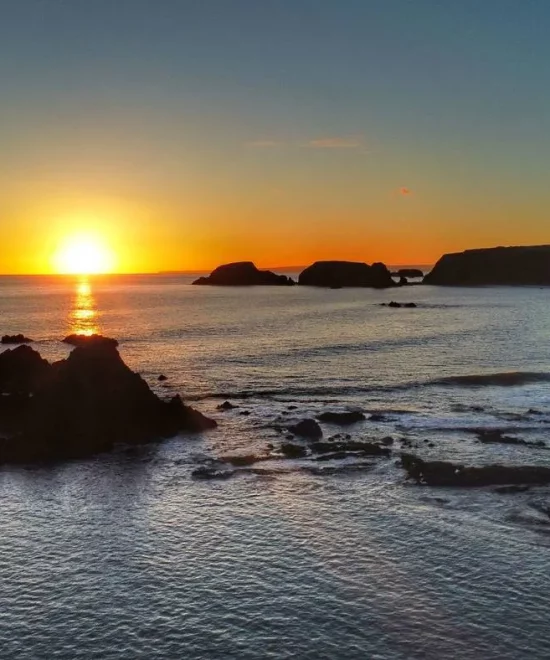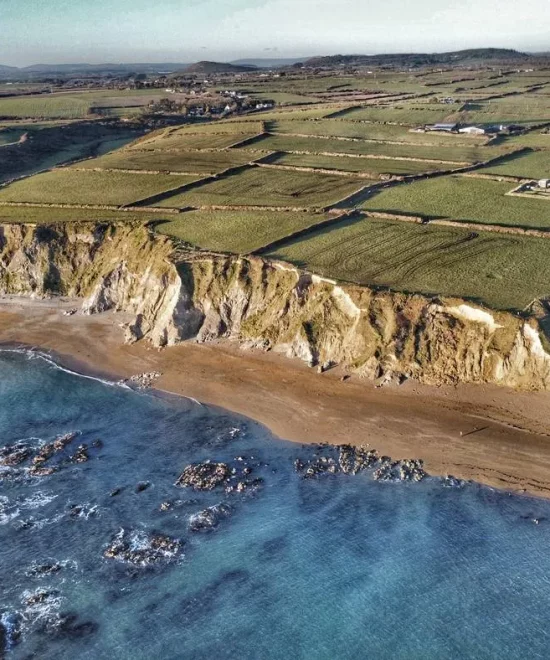Fenor Bog
Co Waterford | Ireland
GeoSite
Transport to a world of serene beauty and natural wonder.
Discover the mesmerising natural wonders of Fenor Bog.
Nestled within the captivating landscapes of the Copper Coast Geopark.
Location
Waterford | Ireland
Access
Easy access possible.
Area
Fenor
Parking
Yes

Discover
Fenor Bog
Embark on an unforgettable journey to Fenor Bog, a hidden gem within the breathtaking Copper Coast Geopark. As you step onto the wooden boardwalk that winds through this ancient wetland, you'll be transported to a world of serene beauty and natural wonder. Listen to the gentle rustle of the wind through the tall grasses, breathe in the earthy scent of the bog, and marvel at the vibrant hues of wildflowers dotting the landscape. Keep your eyes peeled for elusive wildlife, from darting dragonflies to the delicate movements of waterbirds. Whether you're an avid nature enthusiast, a photography aficionado, or simply seeking a peaceful retreat from the bustle of everyday life, Fenor Bog offers an enchanting escape that promises to captivate your senses and leave you yearning for more. Come, immerse yourself in the tranquility of this pristine sanctuary and let its timeless beauty leave an indelible mark on your soul.
COPPER COAST GEOSITES
Learn about the connected geological, historical and cultural heritage of our area.
Geological System/Age and Primary Rock Type
Fenor Bog is a small acidic fen peat area, formed among crags of Ordovician age rocks in southeast Waterford.
The fen itself has been formed in the Holocene (post-glacial) Period, though the hollow and surrounding crags have been moulded by glacial ice during the Quaternary (Ice Age).
The fen itself has been formed in the Holocene (post-glacial) Period, though the hollow and surrounding crags have been moulded by glacial ice during the Quaternary (Ice Age).
Main Geological or Geomorphological Interest
The fen is an area where slightly acidic groundwater seeps out from surrounding land and collects in a bowl-shaped depression, thus forming a marshy mire. Peat has formed within this hollow from the partial decay of plant remains over the last few millennia.
The fen is just over a kilometre long (north-south) and approx. 200m wide, occupying a hollow scoured out by ice among rock crags during the last Ice Age. As with many fen features, the flora is somewhat unique in Waterford, although a number of such, similar features do occur in the surrounding area. Wetland plants abound and unusual species have been recorded here. The wettest patches are dominated by bogbean (Menyanthes trifoliata), water horsetail (Equisetum fluviatile) and bog pond weed (Potamogeton plygonifolius).
In drier places these species become less common and the dominant species is the moss Aulacomnium palustre, with cotton grass (Eriophorum angustifolium), marsh bedstraw (Galium palustre) and sedge (Carex rostrata) all frequent. In addition the bog St. John’s Wort (Hypericum elodes) is very common, a local species in Ireland and Britain.
The abundance of St. John’s Wort is one of the more unusual aspects of the fen.
The fen is just over a kilometre long (north-south) and approx. 200m wide, occupying a hollow scoured out by ice among rock crags during the last Ice Age. As with many fen features, the flora is somewhat unique in Waterford, although a number of such, similar features do occur in the surrounding area. Wetland plants abound and unusual species have been recorded here. The wettest patches are dominated by bogbean (Menyanthes trifoliata), water horsetail (Equisetum fluviatile) and bog pond weed (Potamogeton plygonifolius).
In drier places these species become less common and the dominant species is the moss Aulacomnium palustre, with cotton grass (Eriophorum angustifolium), marsh bedstraw (Galium palustre) and sedge (Carex rostrata) all frequent. In addition the bog St. John’s Wort (Hypericum elodes) is very common, a local species in Ireland and Britain.
The abundance of St. John’s Wort is one of the more unusual aspects of the fen.
Site Importance
This is a very good example of an acidic fen peat environment, and it is an example of the most recent geological deposit still in the process of forming. The site is of County Geological Site status for its geological importance, but it is a national Nature Reserve and a pNHA (No. 1697).
Safety and Access
Car parking is available and easy access possible.
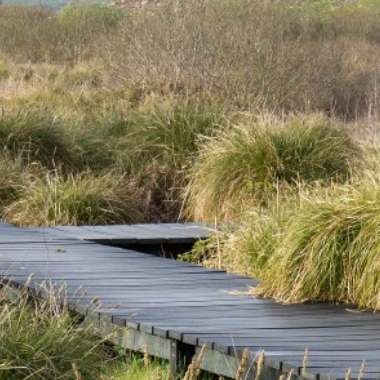
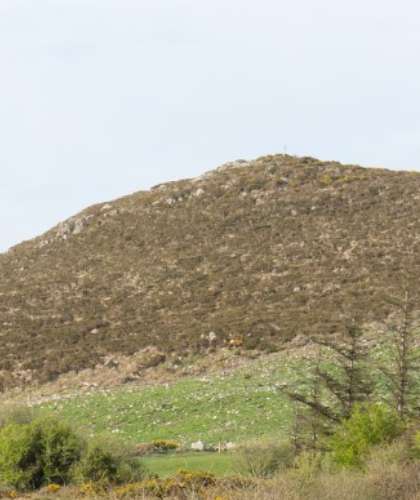

Welcome To Our Community!
Stay connected with the latest updates, exclusive offers, and exciting news by subscribing to our newsletter.
Discover Our Journey Through the Gallery
Join us on an exciting journey as we capture the essence of the Copper Coast through our social media channels.
Follow our adventures as we traverse stunning landscapes and immerse ourselves in the wonders of time and nature.
Interactive Map
Explore the Copper Coast with Our Interactive Geosites Map
Discover Every Geological Treasure and Heritage Site Across the Copper Coast UNESCO Global Geopark.

